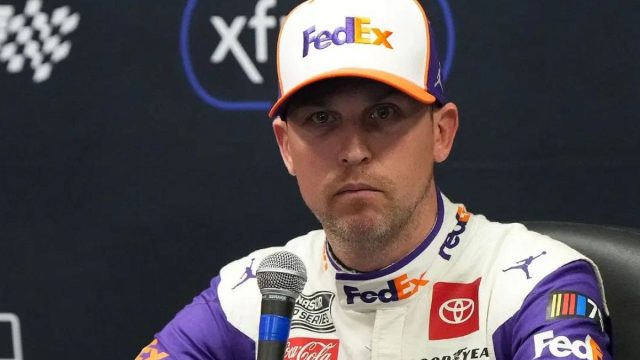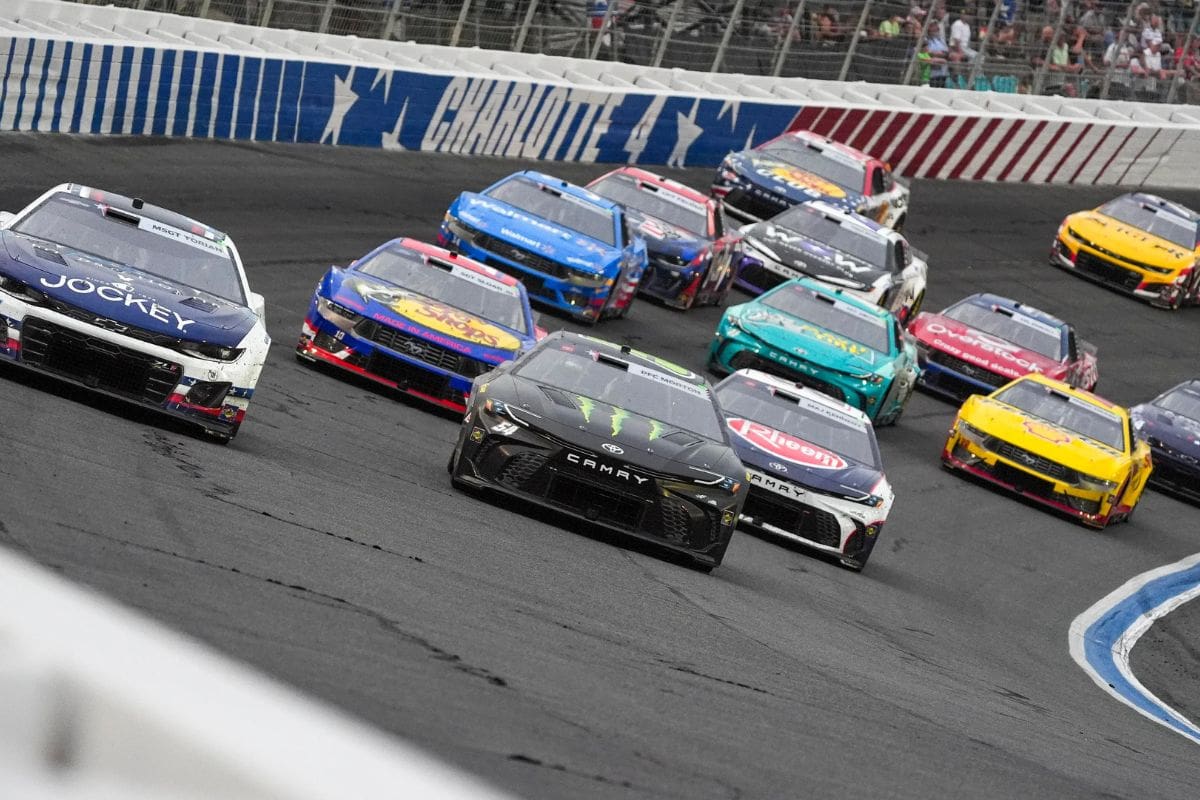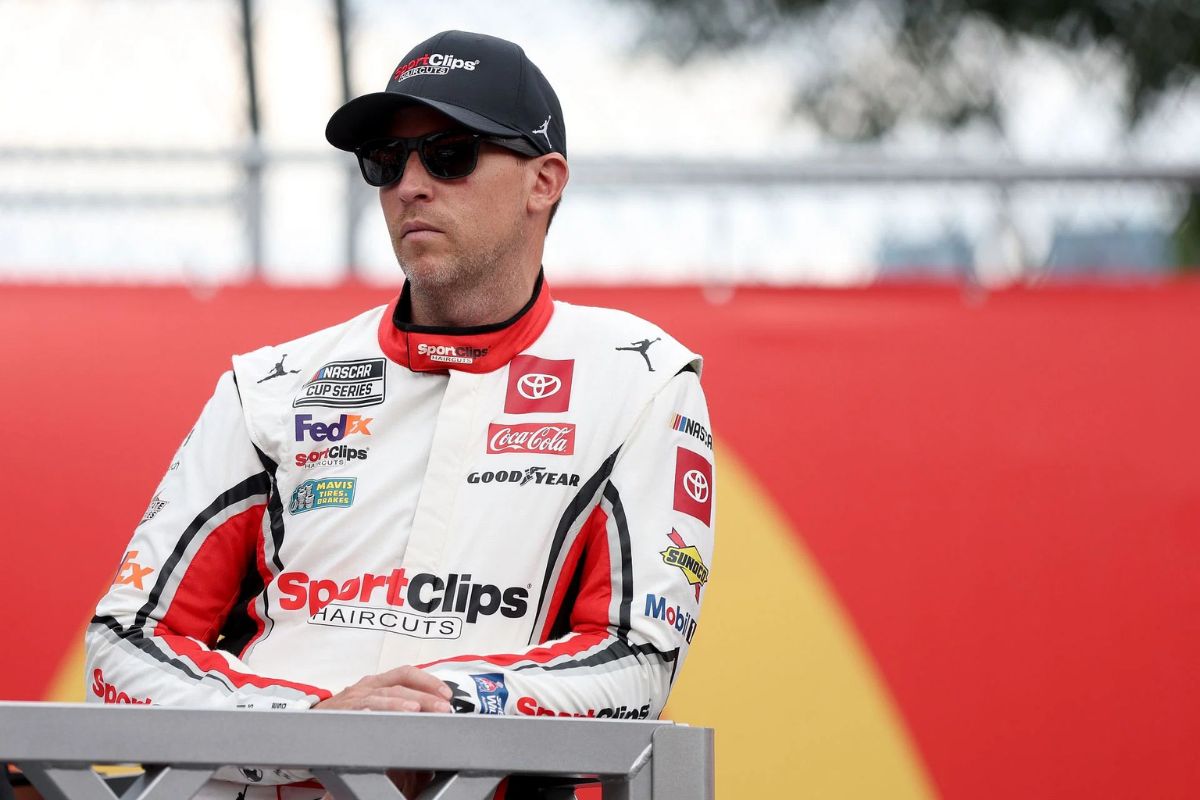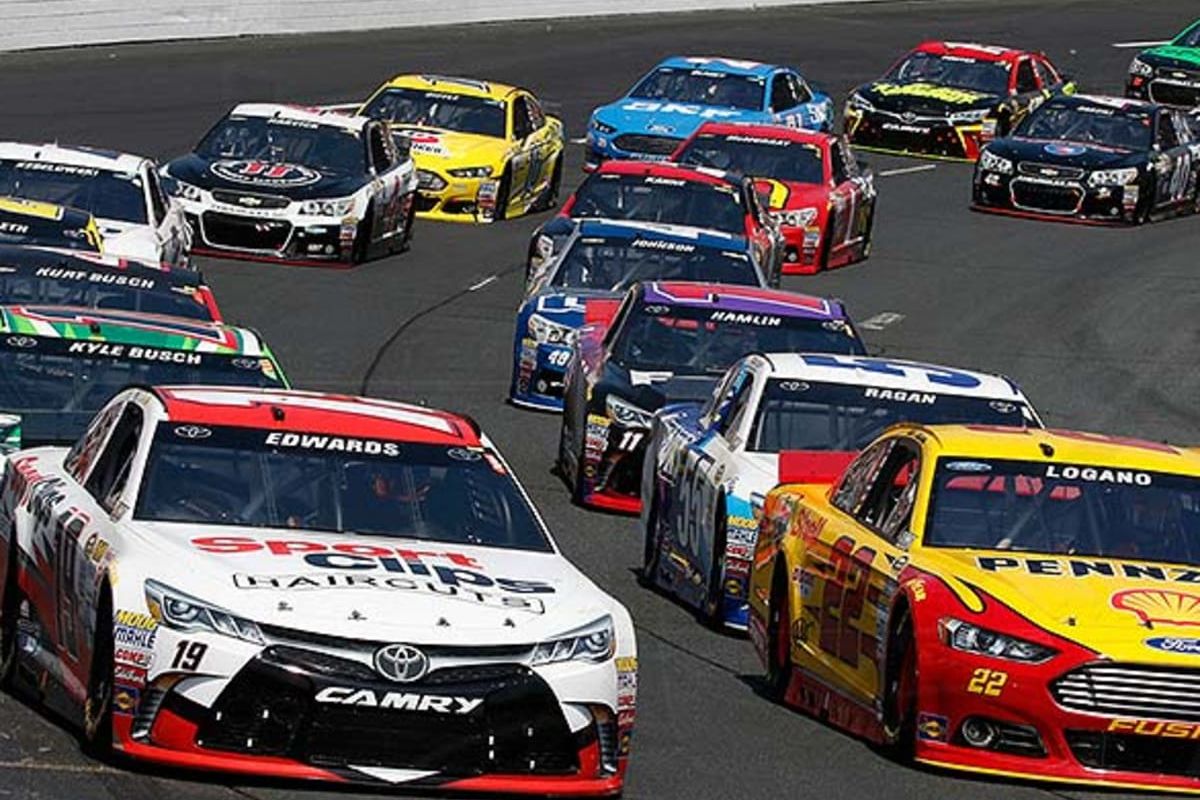Denny Hamlin on Gene Haas’s Big Opportunity: Denny Hamlin‘s commentary on Gene Haas’s situation post-Chase Briscoe reveals the potential for tactical revival within Stewart-Haas Racing. Briscoe’s departure offers Haas a unique opportunity to reassess team dynamics and investigate a competitive driver market that could introduce new talent and groundbreaking strategies into the fold. This crucial moment prompts questions about how Haas will navigate the selection process and what implications this may have for the team’s future performance. As the landscape shifts, the decisions made in the coming months could redefine the path of Stewart-Haas Racing.
Key Highlights
- Denny Hamlin highlights Briscoe’s departure as a chance for Gene Haas to recruit high-potential drivers to rejuvenate the team.
- The competitive talent market allows Haas to explore promising candidates after Briscoe’s exit, potentially enhancing team performance.
- New drivers can bring fresh energy and perspectives, which could positively impact Stewart-Haas Racing’s dynamics and results.
- Hamlin emphasizes the importance of aligning new driver skills with team strategies for future success in NASCAR.
- The shift in driver lineups creates opportunities for strategic reassessment, crucial for maintaining competitiveness in the evolving NASCAR landscape.
Darlington Race Highlights
The unpredictability of motorsport often highlights the excitement inherent in races like the Cook Out Southern 500 at Darlington. This year’s event emphasized that unpredictability, with Chase Briscoe emerging as the unexpected victor. His victory not only marked a notable milestone for Briscoe but also mirrored the surprising outcomes seen in previous races, such as Harrison Burton’s win at Daytona.
The race demonstrated the potential for upsets, a hallmark of NASCAR, where established competitors can be overshadowed by emerging talent. Kyle Busch’s runner-up finish again raised questions about his playoff eligibility, as he narrowly missed a critical opportunity to secure a spot. This outcome accentuates the intense competition within the series, where consistent performance can be derailed in a single event.
Meanwhile, Tyler Reddick‘s claim to the regular season championship adds another dimension to the narrative, positioning him as a key player in the upcoming playoff landscape. Briscoe’s victory also coincided with his impending shift to Joe Gibbs Racing, a move prompted by Stewart-Haas Racing‘s tactical change.
This alteration reshapes the dynamics of the teams involved andhighlights the ongoing evolution within the sport as drivers and teams navigate the complexities of charters and competitive positioning. The Cook Out Southern 500 encapsulated the drama and potential that define NASCAR, leaving fans and analysts in a similar position to ponder the implications of these developments as the playoffs loom on the horizon.
Denny Hamlin’s Perspective on the Charter Situation
Denny Hamlin’s insights on the charter situation reveal the complexities facing teams like Stewart-Haas Racing (SHR) as they navigate the competitive landscape of NASCAR. The ongoing discussions surrounding charters are crucial, particularly as SHR contemplates the future of the No. 14 car amidst its performance fluctuations.
“The 14 car, you know, we go to some racetracks, and they were really bad.”
“Some of the Stewart-Haas cars I’ve seen were way off the pace—like one or two of the cars would be way off the pace for a little while during a race—and then, you know, they come back and finish okay.” – Hamlin
Hamlin’s observations indicate a detailed understanding of the dynamics at play, especially regarding the implications for SHR’s playoff approach.
Key points raised by Hamlin include:
- The No. 14 car’s inconsistent performance at diverse racetracks.
- SHR’s historical struggles with pace, impacting their competitiveness.
- The uncertainty surrounding the decision to retain the No. 14 charter or shift focus.
- The significance of Briscoe’s playoff entry as a double-edged sword for SHR.
- The broader implications of charter stability on team operations and driver contracts.
Hamlin’s comments highlight that while the No. 14 car has had moments of success, it often falls short when it matters most.
This inconsistency raises questions about SHR’s long-term vision and resource allocation. The charter system, designed to provide stability, also complicates tactical decisions.
As teams weigh performance against contractual commitments, the conversation shifts toward how best to utilize their assets in a competitive field.
Hamlin’s Views on Briscoe’s Playoff Prospects
Considering the competitive nature of NASCAR, insights into Chase Briscoe’s playoff prospects reveal both potential and challenges. Denny Hamlin, a seasoned competitor, emphasized Briscoe’s aptitude on road courses, noting, “the track lends itself okay to Chase.”
“But I think the track lends itself okay to Chase. I think, you know, he’s pretty good on road courses. We’ve got a couple of those in the playoffs.”
“If he can get to the Round of Eight, there’s one there, I believe, in the final eight—I think, yeah, it’s in the Round of 12. So, I mean, he’s going to have an opportunity. He’s good on short tracks.” – Hamlin
With multiple road courses featured in the playoffs, Hamlin’s assessment positions Briscoe as a strong contender in these specific events. His confidence is further enhanced by Briscoe’s capabilities on short tracks, which are integral to playoff success.
However, Hamlin tempered expectations by suggesting that while Briscoe could advance to the Round of Eight, achieving a top position in the playoffs might be “a stretch.” This intricate perspective reflects the unpredictable nature of NASCAR, where variables can dramatically influence outcomes.
Hamlin’s acknowledgment of uncertainty—“Who’s to say how this thing’s going to turn out?”—underscores the volatility inherent in the sport.
Briscoe’s potential hinges not only on his driving skills but also on tactical decisions made by his team. The interplay between driver performance and team dynamics will be critical as the playoffs unfold.
While Hamlin sees a pathway for Briscoe to take advantage of his strengths, the broader context of competition will ultimately dictate his playoff path. As teams prepare for the challenges ahead, Briscoe’s ability to utilize his advantageous skills on specific tracks will be key to his success.
Hamlin on Charter Decisions and Purchases
While steering through the complexities of charter decisions in NASCAR, Denny Hamlin provided valuable insight into the bidding process for charters, asserting that teams must clearly designate which charter they intend to purchase. His analysis highlights the tactical nature of these transactions, emphasizing that the choice of charter can greatly impact a team’s operational and financial landscape.
“No, my guess is that when you’re bidding, or when you’re making a purchase, you’re designating which charter you’re purchasing, so I don’t think that changes.” – Hamlin
Hamlin speculated that the Haas Factory Team has likely made decisive choices regarding which charters to retain or sell, with a keen eye on maximizing potential benefits. His comments emphasize the importance of tactical foresight in NASCAR’s evolving market.
Key considerations in charter decisions include:
- Financial Viability: Evaluating the revenue potential tied to specific charters.
- Team Identity: Considering how charters align with a team’s brand and history.
- Market Dynamics: Understanding the competitive landscape and demand for charters.
- Operational Efficiency: Analyzing the logistical implications of charter ownership.
- Long-term Strategy: Planning for future growth and opportunities within the sport.
As teams navigate these waters, clarity in intent and tactical planning will be critical to their success in a rapidly changing NASCAR environment.
Future of Stewart-Haas Racing Drivers and Charters
The disbanding of Stewart-Haas Racing (SHR) has created a considerable reshuffling of drivers and charters within the NASCAR Cup Series. As a direct consequence, three out of SHR’s four drivers have secured new positions for the 2025 season, indicating a swift adaptation to the changing landscape.
Josh Berry’s move to Wood Brothers Racing, alongside Noah Gragson’s shift to Front Row Motorsports and Chase Briscoe’s ascent to Joe Gibbs Racing, emphasizes a competitive market for talent. However, Ryan Preece remains without a ride, highlighting the volatility and uncertainty that can accompany such changes.
While the drivers have largely found new opportunities, the fate of the charters remains more precarious. Several teams are actively pursuing expansion plans, with Front Row Motorsports publicly announcing their intentions.
Likewise, 23XI Racing, co-owned by Denny Hamlin and Michael Jordan, is seeking to add another car, reflecting the increasing demand for competitive entries in the Cup Series. Trackhouse Racing also aims to grow, already fielding three charters and welcoming Shane van Gisbergen into their fold.
This dynamic environment raises questions about the tactical decisions made by Gene Haas, particularly regarding the preservation of the No. 14 car. As teams jockey for position, the future of SHR’s charters could become a critical factor in their long-term viability.
News in Brief: Denny Hamlin on Gene Haas’s Big Opportunity
The departure of Chase Briscoe presents a crucial moment for Gene Haas and Stewart-Haas Racing. This shift opens avenues for recruiting emerging talents and reassessing team dynamics, potentially enhancing performance in future seasons. The competitive driver market serves as a catalyst for revitalization, enabling tactical alignment with team objectives. Ultimately, this situation highlights the importance of adaptability and foresight in fostering a successful racing team capable of maneuvering the evolving landscape of motorsports.
ALSO READ: Denny Hamlin Breaks Down the NASCAR Playoffs and the ‘Wild’ Schedule Ahead



